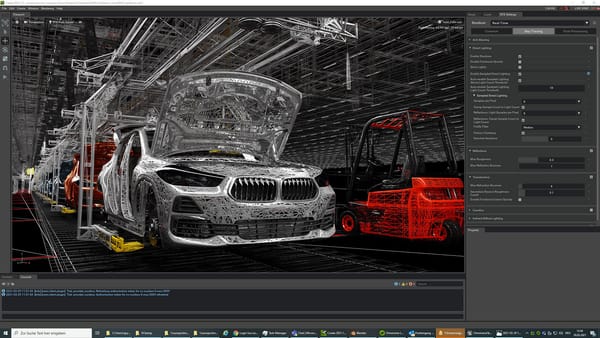Remember the metaverse?
Back in 2021 and 2022, it was the buzzword on everyone’s lips – a vision of virtual worlds filled with avatars, digital real estate, and meetings that took place around cartoon conference tables. I wrote a number of posts on my previous (now archived) blog during that time, exploring what this new digital frontier might mean for individuals and consumers.
Like many, I was intrigued, hopeful, and a little sceptical.
Three years later, much of that hype has faded. The consumer metaverse hasn't vanished, but it has certainly stalled. Headsets still feel clunky. Engagement has plateaued. Meta's early dream of a workplace revolution in VR never quite caught fire.
But here’s the twist: the metaverse isn’t dying, it’s thriving – just not where most people expected.
Enter the Industrial Metaverse
A Wired article published in early May 2025 reframes the metaverse conversation with a more grounded perspective. "The Dream of the Metaverse Is Dying. Manufacturing Is Keeping It Alive," says Wired as it explores how companies like BMW, Amazon, and Lowe’s are using metaverse technologies – specifically digital twins, simulations, and spatial computing – to transform how they design, build, and optimise physical spaces.
BMW, for example, now plans new factories using detailed virtual replicas created with Nvidia’s Omniverse platform. Engineers can walk through these digital twins, test assembly lines, simulate robot workflows, and spot problems before a single bolt is turned. The result is faster builds, better layouts, and fewer costly surprises.
As Wired notes, what’s emerging here is a convergence of technologies – from 3D modelling to generative AI – that has far more immediate value than virtual poker nights with your colleagues.
What Communicators Should Take Away
For communication pros, this shift offers a few compelling signals:
- The narrative has matured. The metaverse is no longer a consumer fantasy. It’s a practical enterprise tool. Our messaging should reflect that.
- We need to reframe the language. “Metaverse” still carries baggage. Try “spatial computing,” “digital twins,” or “virtual simulation” — terms grounded in outcomes, not abstractions.
- Show, don’t tell. Now is the time to craft stories about how these technologies are solving real-world problems. Not sooner or later, or one of these days, but now.
- Stay alert to ethical and cultural impacts. Simulated environments raise questions about data use, employee monitoring, and the role of AI in decision-making. These must be part of the conversation.
As communicators, we have an opportunity – and a responsibility – to help organisations articulate the real value of these technologies while managing expectations and addressing concerns.
Bringing the Story Full Circle
Looking back at what I wrote about the metaverse between 2021 and 2023, and what Shel and I discussed in our FIR podcast, I see the same curiosity and questioning spirit that still drives my interest today. But what’s changed is the context. What was once a grand promise is now a working system – not in games or social platforms, but in factories, warehouses, and architectural studios.
So maybe the metaverse hasn’t died, it’s just grown up. And like many grown-ups, it's gone to work.
As spatial computing, AI, and industrial applications evolve, I’ll continue exploring what this means for communicators and business leaders alike.
Related Reading:
- FIR #427: The Metaverse Lives! Just Don’t Call It The Metaverse (4 September 2024)
- FIR #326: The (Metaverse) Winter of Our Discontent (7 April 2023)
- FIR #279: Business Buys Into the Metaverse (22 August 2022)
- The metaverse is not your destination (29 July 2022)
- Second Life was ahead of its time (7 February 2022)














